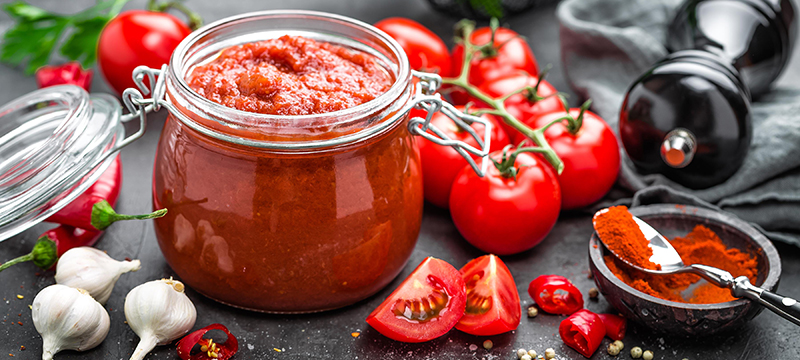Celebrate your bountiful crop of tomatoes from the garden by making some tasty salsa you can enjoy and share with your family and friends. You may have already developed a salsa recipe using fresh ingredients from your garden, but learning about food safety before canning your special salsa is essential. Knowing canning safety rules also means knowing how long home canning food lasts. Based on researched and tested recipes, this article helps ensure your salsa is delicious and safe to consume.
Salsa Canning Tools
Canning salsa requires all the essential gear for canning. It is best not to cut corners on equipment because you want to follow food safety rules. Also, it would be best if you had a boiling water canner. It is a sizeable, deep aluminum pot for submerging your jars. Other items you will need include:
- Canning jars.
- Metal, single-use canning lids.
- Rust-free, undented metal bands that fit snugly on jars.
- A rack that works well inside the canner.
- Canning funnel.
- Stainless steel ladle: like the one used for soup.
- Jar lifter; special tongs for lifting canning jars safely.
- Stainless steel stock pot for cooking and holding a big batch of tomatoes.
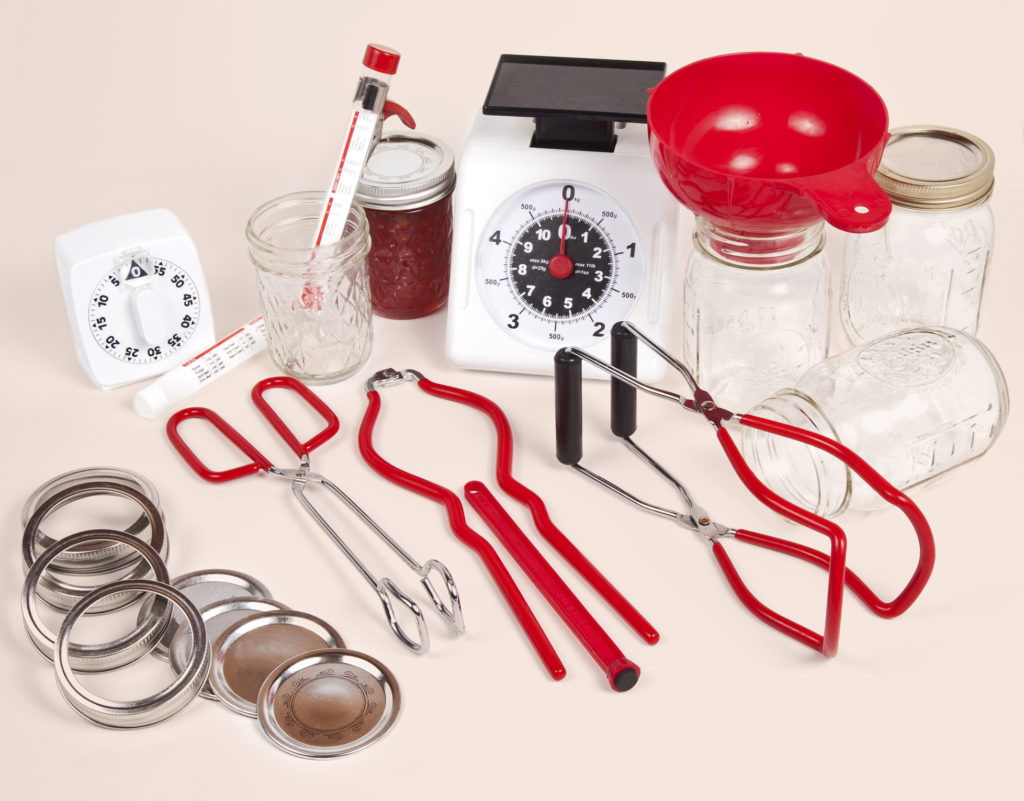
Now that you know the tools for successfully canning salsa, remember that proper canning helps determine how long home-canning food lasts.
Basic Salsa Canning Guidelines
Follow these basic guidelines for canning salsa; you will have flavorful salsa on the shelf for at least 18 months. You can use zesty condiments, chips, and guacamole for your dishes.
- Follow kitchen safety rules. Wash hands, produce, equipment, canning jars, and lids.
- Add acids, like vinegar, lemon juice, or citric acid. That way, you lower the pH level.
- Substitute vinegar with lemon, but not lemon with vinegar. Vinegar is not as acidic as lemon.
- Use 5 percent acidic vinegar. The acidity level is critical to safe home canning.
- Use firm, ripe tomatoes, ideally paste tomatoes, like plum tomatoes.
- Do not add extra low-acid ingredients like onions and peppers.
- Adding extra dry spices, such as cumin, pepper, and salt, is safe.
- Thicken the ingredients only with safe thickeners like Clear Jel because it withstands various pH levels.
- Do not use flour or cornstarch as thickeners.
- Wear rubber or plastic gloves, and avoid touching your face when cutting or managing hot peppers.
- If you decide not to wear gloves, then wash your hands with water and soap after managing hot peppers.
- After opening, store canned salsa in the refrigerator.
- Store any jars that did not seal properly in the refrigerator and consume the salsa within two weeks.
- Do not consume home-canned salsa with off smells, bulging lids, or other noticeable spoilage.
- If you do not feel comfortable canning salsa, you can freeze it instead or place your fresh salsa in the refrigerator for one to two weeks.
Ingredients and Directions for Making Delicious Salsa
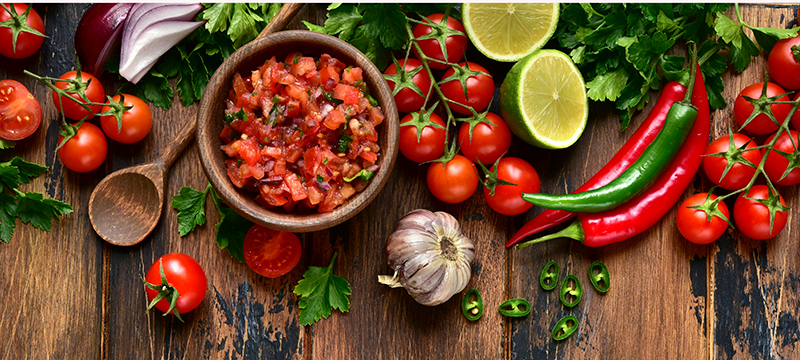
As per the National Center for Home Food Preservation, there are specific standards and methods of handling salsa ingredients to help you avoid any contamination. This recipe adheres to the organization’s standards, ensuring the acidity level remains correct based on the balance of ingredients.
This recipe yields 6 pint-size jars:
- Six cups peeled, seeded, cored, and chopped ripe tomatoes.
- Nine cups of diced peppers and onions.
- Twelve ounces of bottled lime or lemon juice.
- Three teaspoons of pickling or canning salt.
Steps to can properly
Before starting this recipe, ensure you fully understand how to use a boiling water canner. Wash and rinse the canning jars, keeping them hot until filled. Get the lids and ring bands ready per the manufacturer’s directions. Dip the washed tomatoes in boiling water for 30 to 60 seconds until the skins split. Submerge right away into the chilly water. Peel off the loose skins and take out the cores. Remove seeds. Now chop the tomatoes into quarter or half pieces.
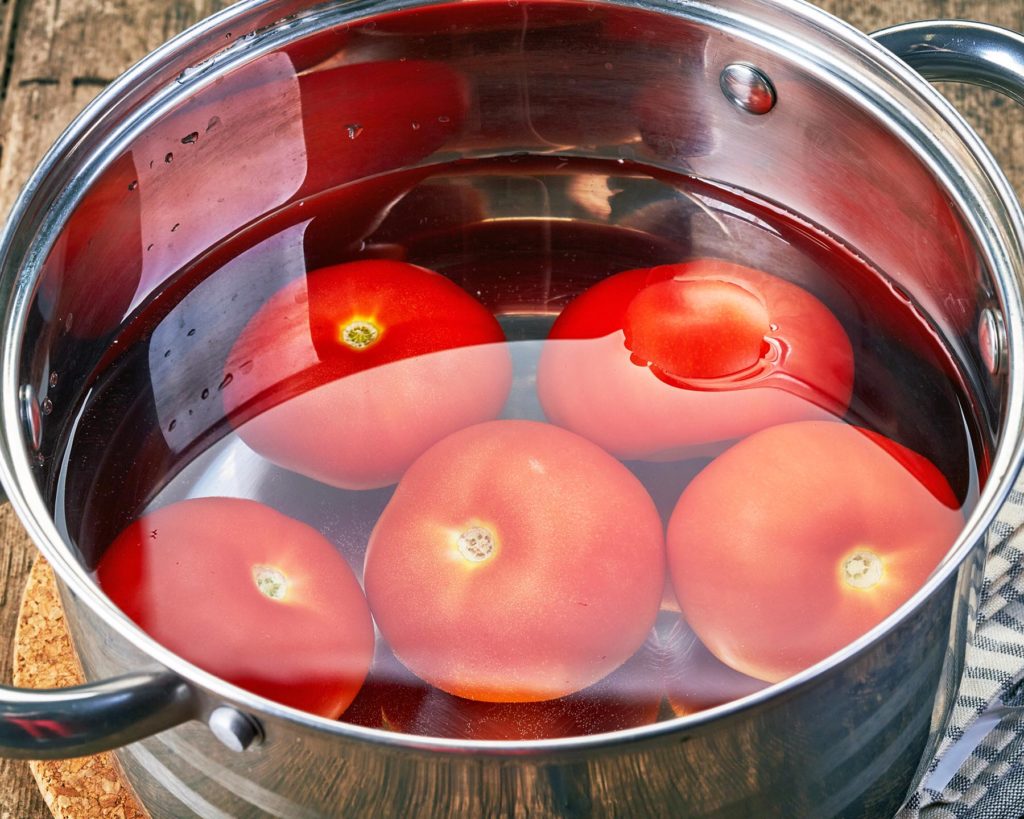
Before starting this recipe, ensure you fully understand how to use a boiling water canner. Then, wash and rinse the canning jars, keeping them hot until filled. Get the lids and ring bands ready per the manufacturer’s directions. Dip the washed tomatoes in boiling water for 30 to 60 seconds until the skins split. Submerge right away into the chilly water. Peel off the loose skins and take out the cores. Remove seeds. Now chop the tomatoes into quarter or half pieces.
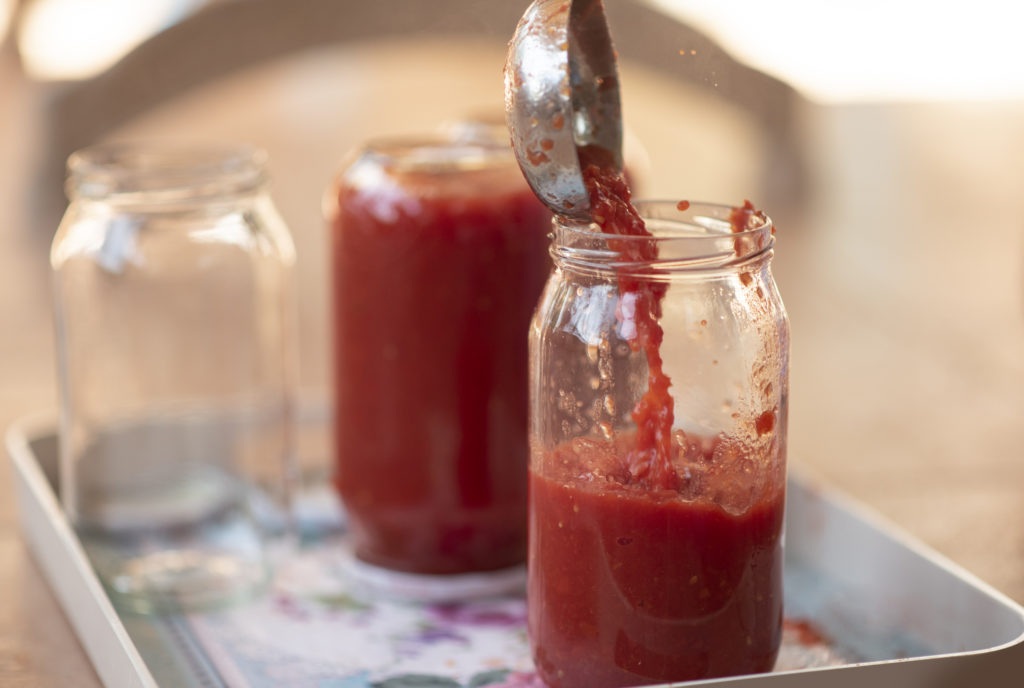
Place the hot salsa into the hot jars and leave one-half-inch of headspace. Remove any signs of air bubbles and adjust the headspace to one-half inch. Take a dampened, clean paper towel and wipe the rim of the jars. Then, fit lids and bands. Use the jar lifter and place the sealed jars in the canner on the rack. Jars should not touch. Cover the jars with water.
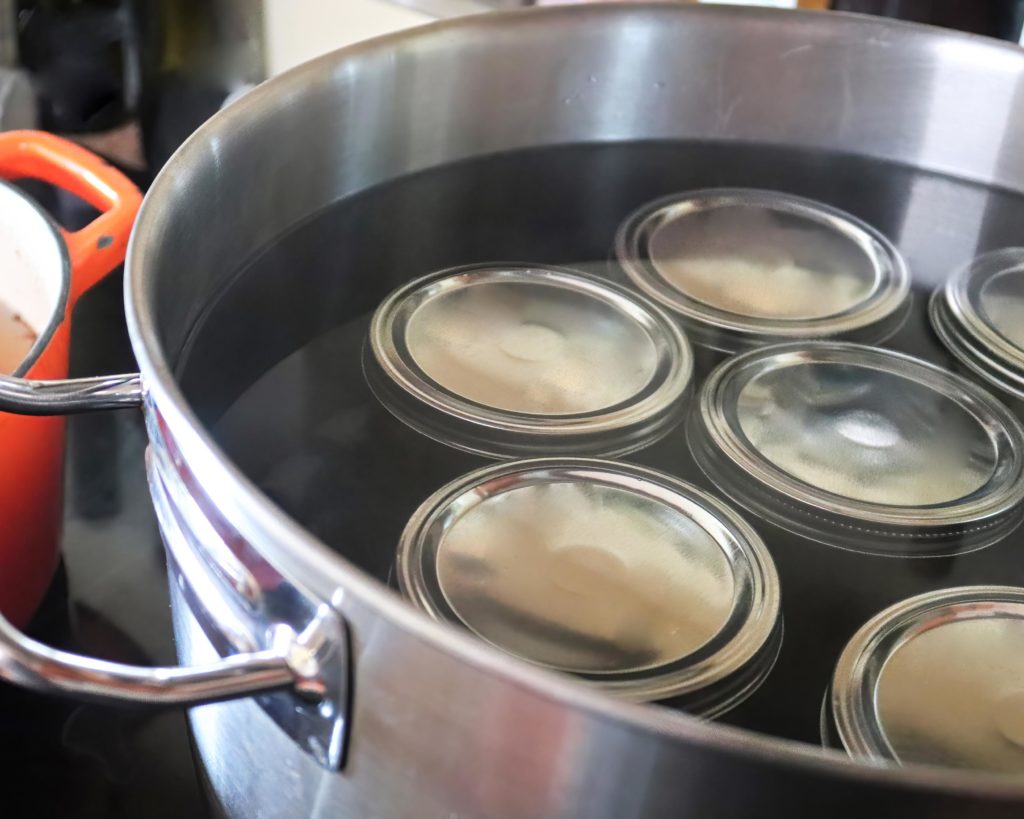
Cover the canner, turn the heat to boil for 15 minutes, then shut off the heat. Remove the lid from the canner, releasing steam. Leave the jars in the canner to rest for five to ten minutes.
Use the jar lift to pull the jars out of the canner and let them stand on a rack or towel without touching them. They will cool, and you will hear a “ping” from the jars, meaning they have sealed properly.
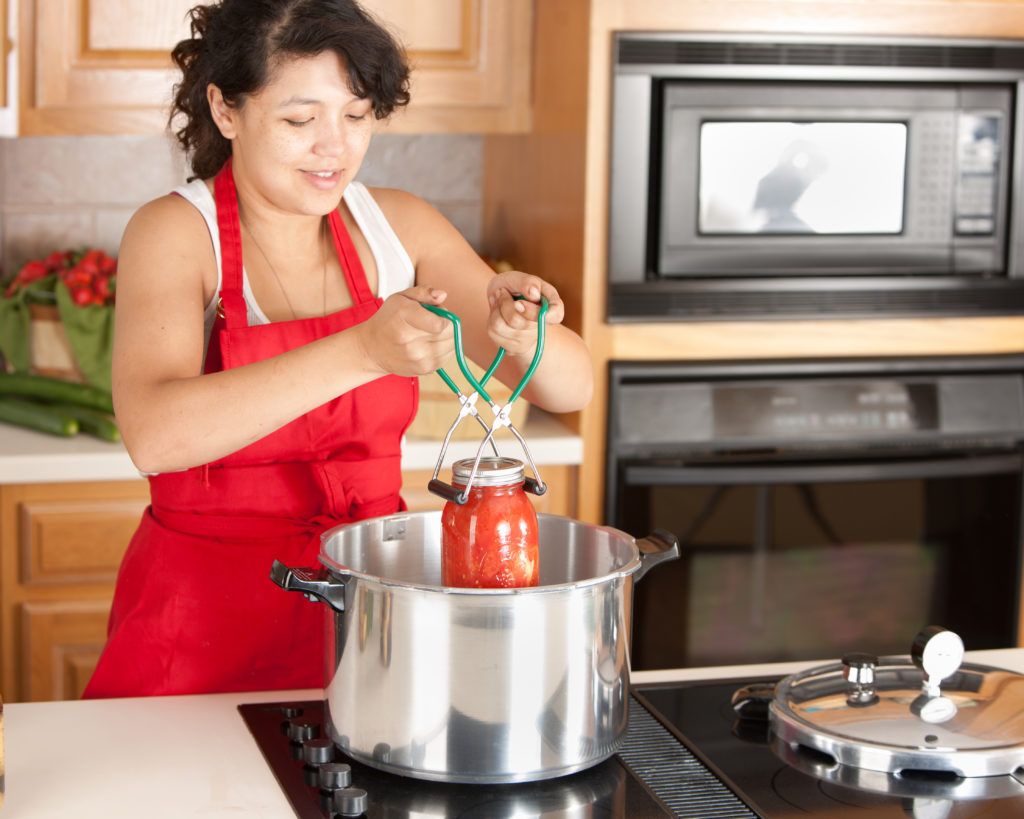
The jars need to cool for 12 to 24 hours undisturbed. Once cooled, it is an enjoyable time to double-check the seals. Unscrew the bands and press down gradually at the center of each lid. If there is no give, then the jar has been sealed properly. If the lid springs up, it does not seal. So, place the jar in the refrigerator and consume the contents in two weeks.
Final Thoughts
The above recipe is acidic, and you want that when canning salsa, but you still have room to amend the recipe. For example, you can substitute sweet bell peppers or combine them with hot peppers.
The recipe calls for bottled lime or lemon juice to set a minimum level of acidity as a standard. The National Center for Home Food Preservation (NCHFP) evaluated the recipe using lemon juice as the most acceptable flavor. Avoid substituting vinegar for lime or lemon juice, or use key lime juice. It is highly recommended not to alter tomato, vegetable, and acid proportions because it could make the salsa unsafe with the above canning process. Also, refrigerate leftover salsa after filling all the jars, and enjoy. Once you have opened a canned salsa, refrigerate for continued use.

